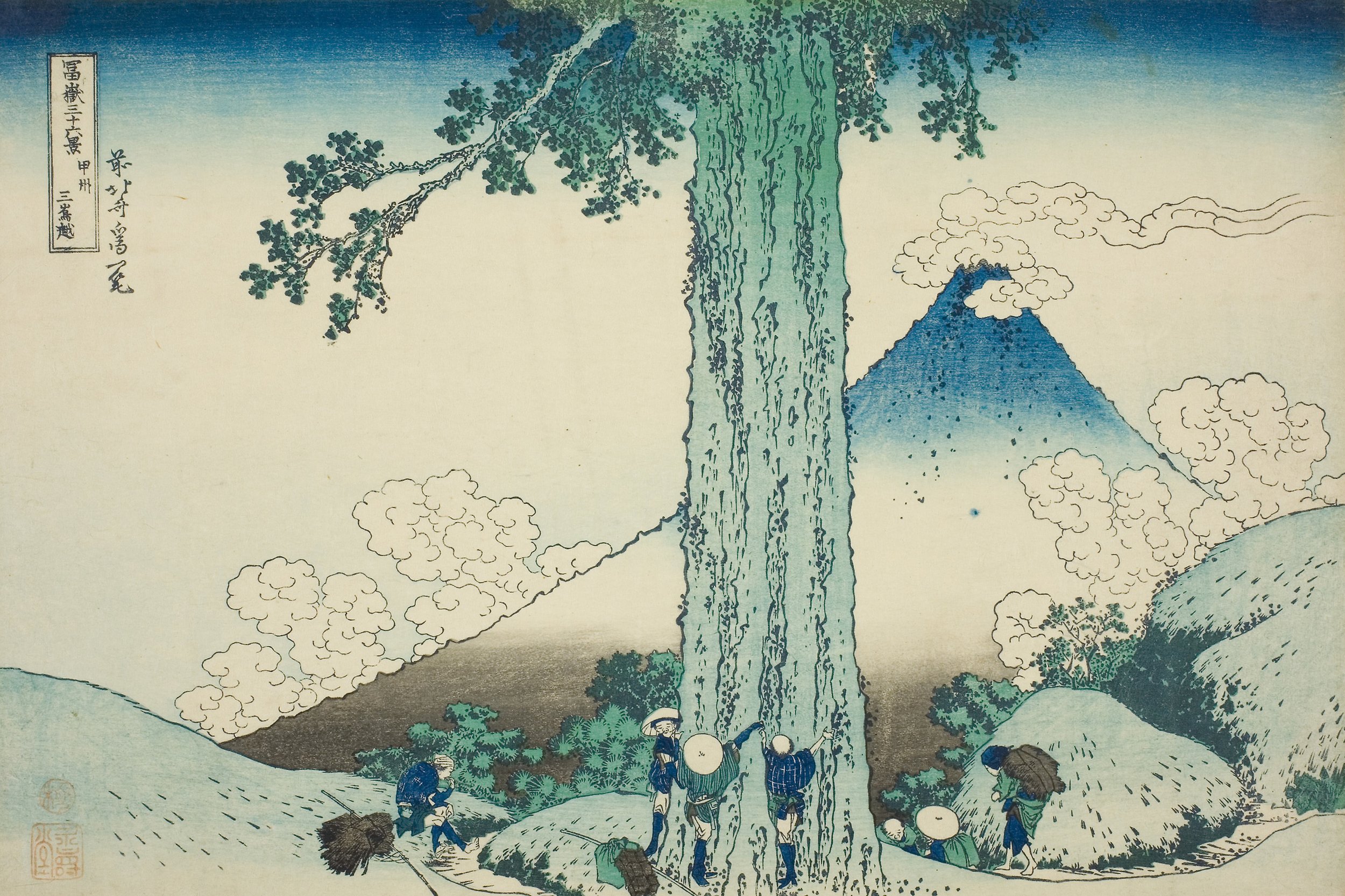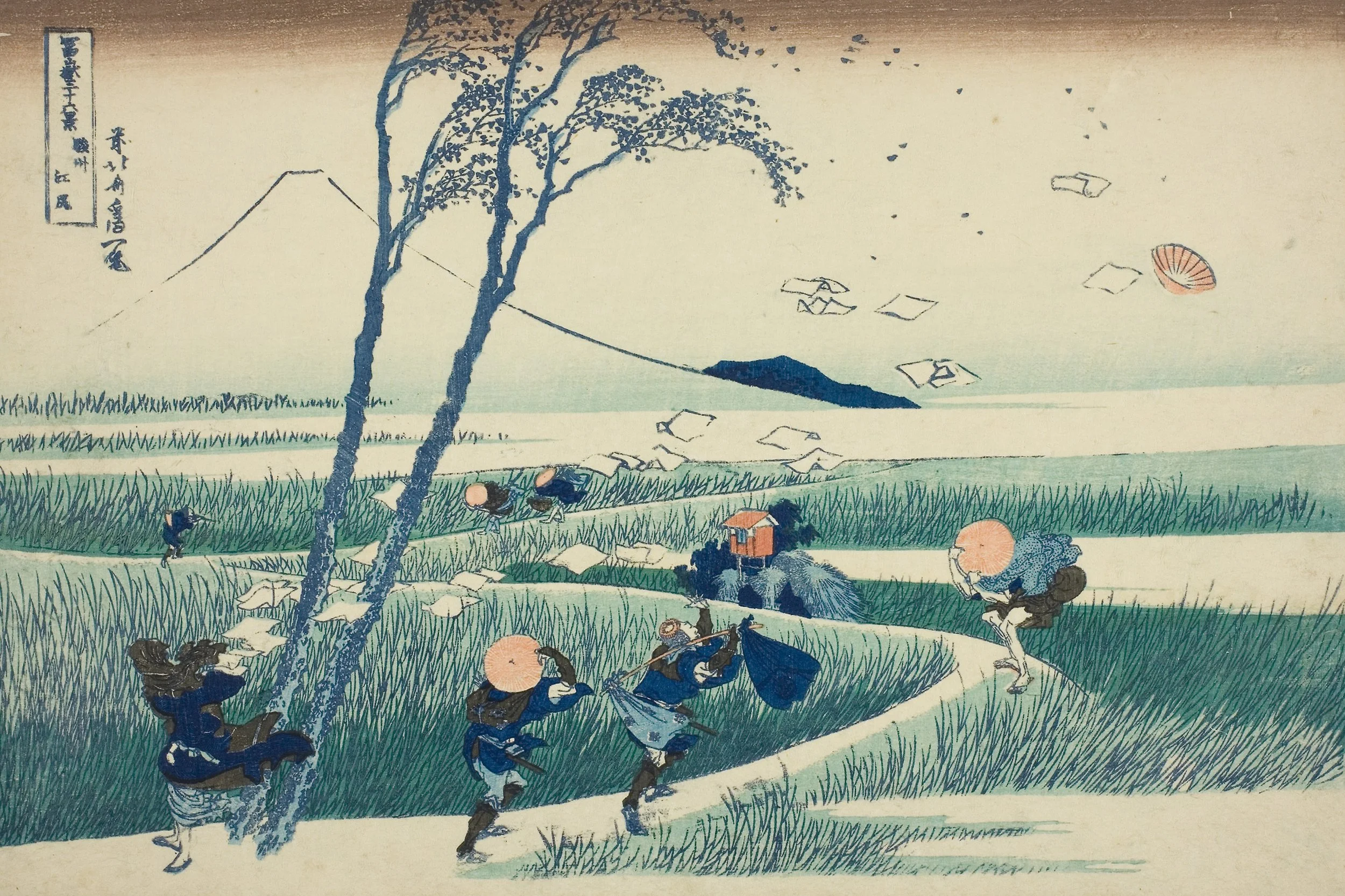17.MIshima Pass in Kai Province 甲州三嶌越
Kōshū Mishima-goe
A highway from Kōshū (present-day Yamanashi Prefecture) through to Mishima.
The exact location does not seem to be clearly identified.
A summer scene with cap clouds.
A traveler is measuring the girth of a pine tree—
a playful and whimsical moment.
Among the Thirty-Six Views of Mount Fuji,
this is one of only two works with a composition centered around the middle axis.
The familiar concave foreground is combined with
a convex-shaped Mount Fuji that juts out from the deepest background.
Here, in addition, a massive pine tree also protrudes as a convex form.
Though there are two convex elements, they do not clash.
Rather, Fuji seems to uphold or support the majestic presence of the pine.
They do not clash because these two convex elements
are fundamentally different in nature.
The pine is a straight line,
while Fuji is curved.
The pine is vertical,
while Fuji is diagonal.
The pine is a line,
while Fuji is a plane.
Because their characteristics are so distinct,
there is no struggle for dominance between them.
Hokusai teaches us this principle.
Hokusai’s aesthetic sensibility resides here.
09
18.Ejiri in Suruga Province 駿州江尻
Sunshū Ejiri
Shizuoka City, Shizuoka Prefecture
Ejiri was a post town on the Tōkaidō Road.
Hokusai depicts travelers departing from there.
Things blown away by the strong wind:
Straw hats
Pine needles
Paper tissues
Things swaying in the wind:
The travelers
Pine trunks
Susuki grass heads
Things unmoved by the wind:
A small roadside shrine
Mount Fuji
In a scene where everything is expressed through motion—
even the road itself curves in an S-shape—
only the shrine and Mount Fuji remain still.
The Thirty-Six Views of Mount Fuji were created around the year 1830.
About fifteen years earlier, the national anthem of the United States was composed—
with lyrics describing the bombardment of Fort McHenry in war-torn Baltimore:
"The rockets' red glare, the bombs bursting in air,
gave proof through the night that our flag was still there."
Amid the tumult, trust is placed in what remains unmoving.
Mount Fuji, of course—
but also the small shrine built by human hands—
both play this role.
An element easy to overlook,
yet it accentuates the surrounding motion.
Try covering the shrine with your finger—
and you’ll see:
it functions like the pivot of a folding fan.
There is no waste in any of the elements.
Hokusai’s aesthetic sensibility resides here.

